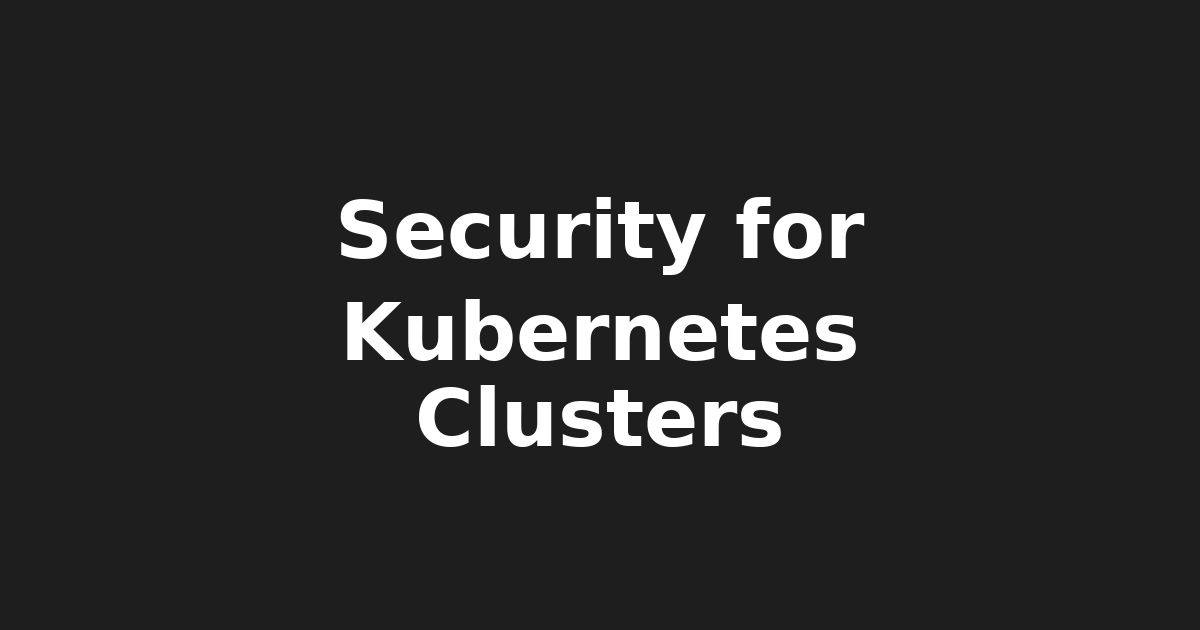Kubernetes Security Best Practices for Self-Hosted Linux Clusters

Security Best Practices for Self-Hosted Kubernetes Clusters on Linux
As the adoption of containerization and Kubernetes continues to grow in production environments, securing self-hosted Kubernetes clusters has become an increasingly critical concern. In this article, we will delve into the latest security best practices for self-hosted Kubernetes clusters on Linux, covering network segmentation, identity and access management (IAM), monitoring and logging, and container hardening.
Why Security Matters
The increasing adoption of Kubernetes has led to a growing attack surface, making it essential to implement robust security measures to protect against potential threats. A single vulnerability in a Kubernetes cluster can have far-reaching consequences, including data breaches, downtime, and reputational damage.
According to the 2022 State of Kubernetes Security Report by the Linux Foundation, 71% of respondents reported experiencing at least one security incident in the past year. Furthermore, a survey by Red Hat found that 75% of organizations experienced a security breach within the past two years.
Network Segmentation
Isolating sensitive components within the cluster using network policies is crucial to preventing lateral movement and reducing the attack surface. Kubernetes provides a range of tools and features for network segmentation, including:
- Pod networking: Allows you to create isolated networks between pods using Calico or Cilium.
- Cluster-wide networking: Enables you to define network policies across the entire cluster.
Example YAML configuration for pod networking:
apiVersion: v1
kind: Pod
metadata:
name: my-pod
spec:
containers:
- name: my-container
image: Docker Image
port: 8080
spec:
networkPolicy:
pods:
- pods: ["my-pod"]
portMappings:
- containerPort: 8080
Identity and Access Management (IAM)
Implementing secure authentication and authorization mechanisms for users and service accounts is critical to preventing unauthorized access to your Kubernetes cluster. Some best practices for IAM include:
- Service accounts: Use service accounts instead of user identities for pod execution.
- Role-based access control (RBAC): Define roles that grant specific permissions to service accounts or users.
Example YAML configuration for a role:
apiVersion: rbac.authorization.k8s.io/v1
kind: Role
metadata:
name: my-role
rules:
- apiGroups: ["*"]
resources: ["*"]
verbs: ["get", "list", "watch"]
Monitoring and Logging
Setting up monitoring tools and log analysis pipelines is essential to detecting potential security incidents. Some popular monitoring tools for Kubernetes include:
- Prometheus: A widely-used monitoring system that provides metrics and alerts.
- Grafana: A visualization tool that allows you to create dashboards and charts.
Example YAML configuration for a Prometheus service:
apiVersion: v1
kind: Service
metadata:
name: my-prometheus-service
spec:
selector:
app: prometheus
ports:
- name: http
port: 80
targetPort: 9090
Container Hardening
Securing containers is critical to preventing security vulnerabilities. Some best practices for container hardening include:
- Docker images: Use Docker images from trusted repositories, such as the official Docker repository.
- Runtime options: Configure runtime options, such as
--privilegedor--no-new-privileges, to limit the capabilities of your containers.
Example YAML configuration for a container:
apiVersion: v1
kind: Container
metadata:
name: my-container
image: Docker Image
command: ["my-app"]
securityContext:
privileged: false
Conclusion
Securing self-hosted Kubernetes clusters on Linux requires a comprehensive approach that covers network segmentation, IAM, monitoring and logging, and container hardening. By following these best practices, you can ensure your deployments are secure, reliable, and resilient in today's fast-paced, threat-driven world.
References
- Kubernetes Security Guide
- Linux Foundation's Kubernetes Security Best Practices
- Kubernetes Security Podcast
Trending Topics
- Kubernetes security: The increasing adoption of Kubernetes has led to a growing need for robust security measures.
- Linux-based self-hosting: Many Linux distributions are being used to host Kubernetes clusters, making this topic particularly relevant to Linux users and system administrators.
Additional Resources
- Kubernetes documentation: https://kubernetes.io/docs/
- Docker documentation: https://docs.docker.com/
- Prometheus documentation: https://prometheus.io/docs/
By staying up-to-date on the latest security best practices for self-hosted Kubernetes clusters on Linux, you can ensure your deployments are secure, reliable, and resilient in today's fast-paced, threat-driven world.
